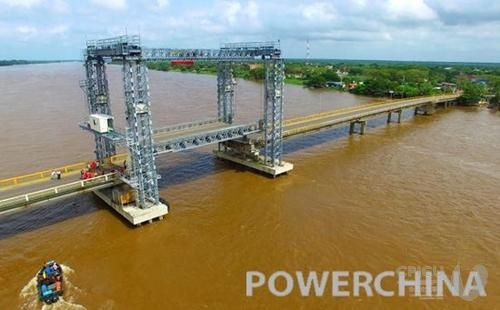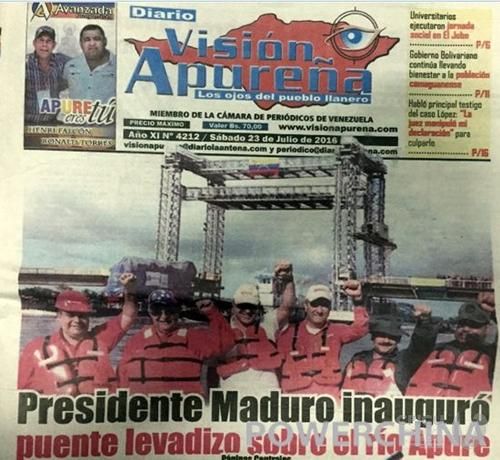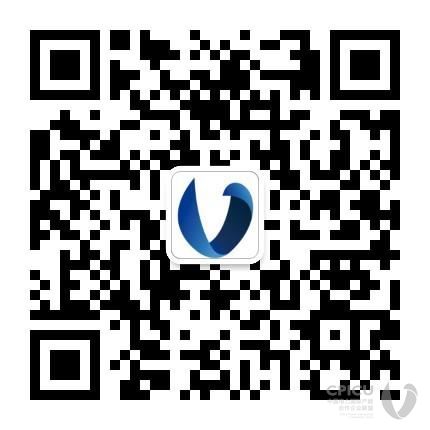On July 22, Venezuelan President Maduro witnessed via live video broadcast the Barinas heavy oil power plant’s first unit undertaken by Sinohydro Bureau 8 crossing the Maria Nieves Bridge on the Apure River.
The president commended POWERCHINA for having fulfilled the wishes of the late President Hugo Chavez. Venezuelan state television and other media conducted live coverage of the bridge crossing process.
The Heavy oil power plant was built in Barinas state, the hometown of late President Chavez, with a total installed capacity of 100 MW. Equipped with six sets of Wärtsilä generators, each set weighs 360 tons, and dimensions of the largest part measure 18 meters by 5 meters by 6 meters. If it fully adopts the land transport, it would cover thousands of kilometers of roads and involve ancillary disposal facilities, including hundreds of highway bridges of differing heights. An immense amount of work is required for reconstruction.
The unit procurement contract was signed in 2014. Sinohydro Bureau 8 and owner PDVSA had conducted research over several meetings and finally decided that the engines and generators were to be transported separately, which were duly loaded in Finland and Italy respectively. Then they were shipped across the Atlantic to the port of Ordaz and delivered to Puerto de Nutrias along the Orinoco and Apure rivers, and then delivered 192 kilometers by overland transport to the project site. It is clear that the transportation of the main engines was a key obstacle in the construction of the project.
In 2015 Venezuela suffered from abnormal temperatures owing to it being an El Niño year, causing the rainy season to end prematurely. In late August, river water levels declined sharply, which coupled with problems with the bridge lifting device, six barges for the engines were docked at Cabruta port in the middle reaches of the Apure River. As a result, the engines had to be temporarily stored in the port warehouse to wait until the rainy season the following year when transport conditions were deemed suitable for re-shipment.
The Maria Nieves Bridge, which was completed in 1962, is the only bridge in Venezuela with an elevatable bridge deck. Since construction, the bridge has never been utilized for the crossing of heavy equipment on such a great scale. Each barge, loaded with engines, is 15 meters wide. There is little room for error if the engines are to pass through the two piers with a gap of 20 meters. In order to ensure the smooth transportation of the engines, the project department coordinated with the local government, owners, subcontractors, and other units to promote the work. By July 18, the non-load passage test under the bridge was a resounding success, laying a solid foundation for the smooth passage of engines under the bridge.
At 16:02 on July 22, there was a scene of thunderous applause and jubilation at the Maria Nieves Bridge in San Fernando de Apure. President Maduro; Eulogio, the Minister for Petroleum and Mines and President of the state company Petróleos de Venezuela; and Apure Governor Ramo Carrizalez at the site monitored and commanded the whole process via video connection, and national television conducted live coverage of the spectacle.
When the engine of the host device passed through the elevated bridge, the President announced this historic moment: Orinoco and Apure Rivers, as the mother rivers in Venezuelan, have once again served its key transport hub functions and thus had fulfilled the wishes of the late President Hugo Chavez. He also stressed that the heavy oil power plant project, undertaken by POWERCHINA, is a project dedicated to improving the people’s livelihood and is beneficial to the peoples of the two countries and is in keeping with national development. The state promises to strongly support the project.
By July 23, three engines passed under the Maria Nieves Bridge, and were transported to the destination Puerto de Nutrias upstream. The remaining three engines are expected to pass through Maria Nieves on August12, and arrive at Nutrias on August16.
A number of media agencies in Venezuela covered the event. The president and government departments attach great importance to and offer support for the project. The state government and the military provided pusher boats, patrol boats, fuel and other facilities free of charge.




